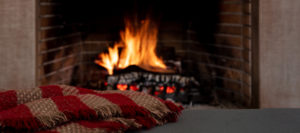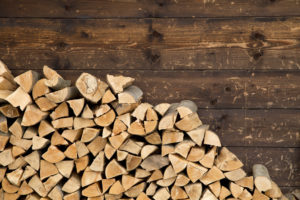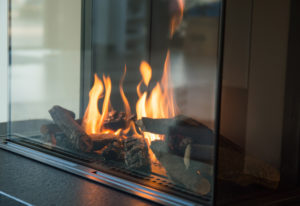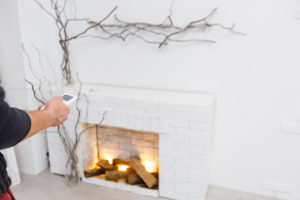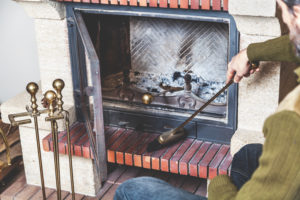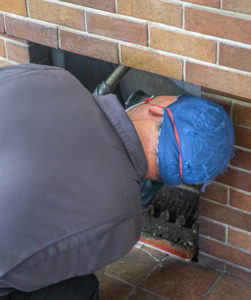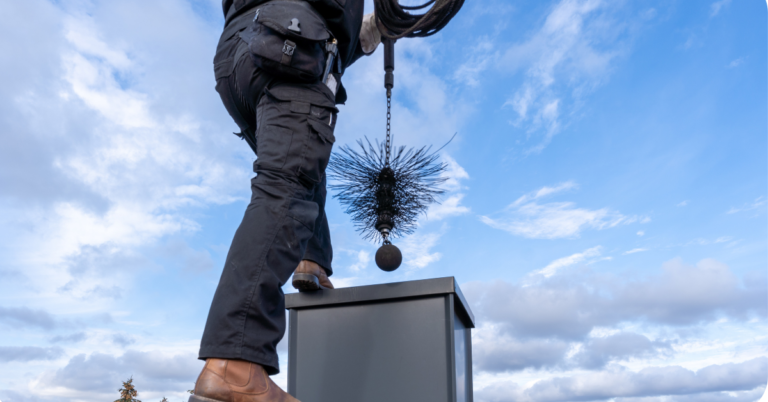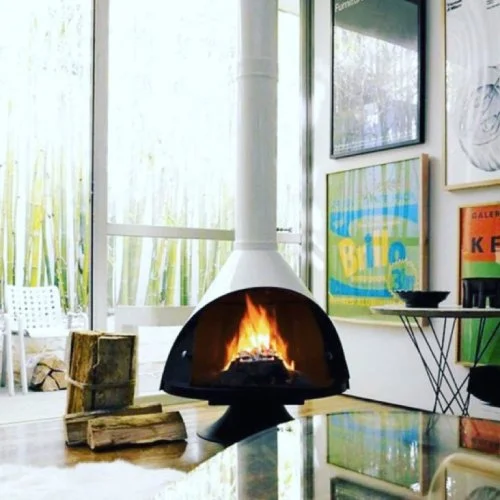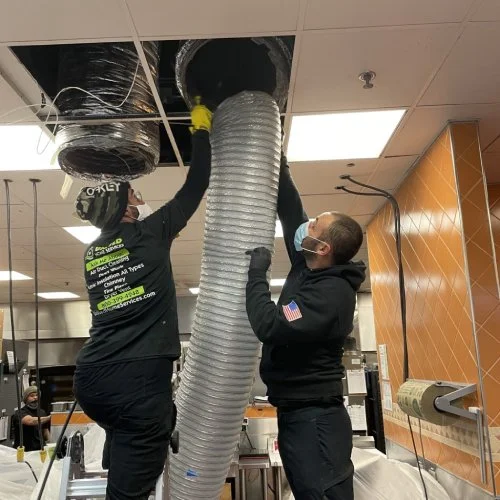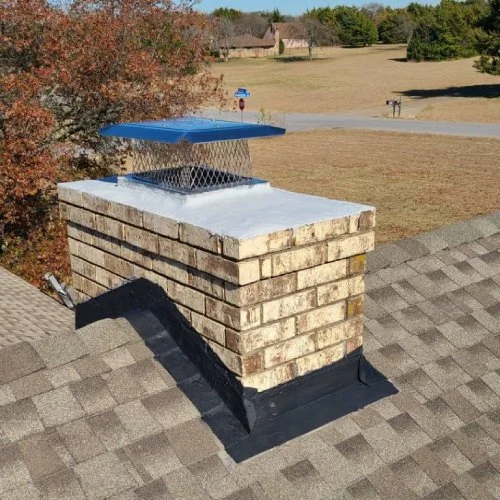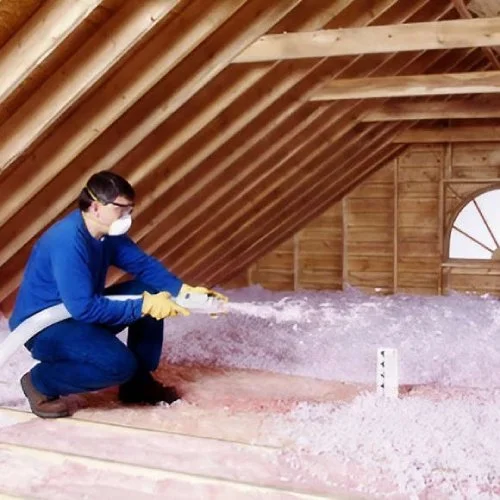Winter is the time when many people spend a lot more time indoors, making time for their loved ones and keeping out of the cold. And for many homeowners, a comfortable home and a burning hearth are a big part of that! It’s one of the reasons that fireplace safety is so important when it comes to really caring for your home.
It might surprise you, but there are actually many components that make up your fireplace that isn’t visible. From the flue to the damper, there are many pieces that make sure your fire burns safely and ventilates as it should. That’s why it’s important that each part is taken care of and consistent inspections aren’t put off.
Because fire is a powerful element and fireplace issues are a safety hazard, it’s a necessity to prioritize annual fireplace inspections. If you’re looking for an expert contractor who can help with any fireplace safety concerns you have, be sure to reach out to United Home Services today.
Fireplace Safety Rules That You Should Follow!
A cozy fireplace can be a delightful addition to any home during the cold winter months, but it’s important to follow proper safety guidelines to prevent accidents. In this article, we’ll discuss essential fireplace safety rules that every homeowner should follow to ensure the safety of their home and loved ones.
Wood Fireplace Safety
A wood fireplace is one of the most popular styles of the fireplace for its real fire appeal and the ambiance it creates. However, because the risks are greater with this type of fireplace, it’s important to keep a few simple tips in mind:
- Carefully Consider the Wood – The right kind of wood is the key to keeping your wood-burning fireplace safe for your home. Be sure to avoid using recently cut wood, as it contains moisture which can cause more smoke. Wood should also be completely dry and should make a hollow sound when it is cracked against another log. It’s also a good idea to know that different types of wood will burn differently. While oak and hardwoods will burn for a long time, softer woods like pine will burn very hot and very quickly.
- Install a Safety Screen – Because you’re dealing with a real fire, fireplace safety screens are a necessary barrier between the fire and the rest of your home. Ensure that it is heatproof so that it will keep embers and other debris within the hearth so they can’t spark and hurt somebody.
- Clean Up Creosote – The buildup of creosote and soot in your fireplace can lead to the kind of fire that you don’t want. It can also lead to toxins and noxious fumes that will create other issues for the health of your family. Because these substances are highly-flammable, it’s important that they are cleared away with consistent chimney sweeping.
Gas Fireplace Safety
A gas fireplace can be a more environmentally friendly option than a wood-burning fireplace, and it features the same fire-burning capability as wood.
To be sure you and your family can enjoy this kind of fire safely, it’s worth being aware of a few fireplace safety tips:
- Create a Clear Zone – Gas fireplaces may not present the same hazards as wood-burning fireplaces. However, it’s still important that certain items that are highly flammable are not placed too close to the fire. Be sure that any newspapers, magazines, books, or fabrics are kept a good distance away.
- Review the Flue – One of the most overlooked aspects of having a fireplace that functions effectively is ensuring the vents and flue are working properly. Be sure to schedule service with a certified chimney sweep so that any issues can be detected and fixed before they lead to backups or carbon monoxide poisoning.
- Maintain the Safety Screen – The safety screen in front of your fireplace is what protects your home and your family from fire. It’s important that it’s kept in good condition so that it can do its job. By keeping it clean, you can ensure there is no creosote buildup, and the risks of fire-related issues will be minimized.
Electric Fireplace Safety
Electric fireplaces are one of the safest choices when it comes to fireplaces in the home. Because this type of fireplace doesn’t rely on a real flame, the hazards are minimized. However, because it is a source of heat, there are some fireplace safety guidelines that still need to be followed:
- Maintain a Clear Zone – Electric fireplaces may not produce flame-like wood or gas fireplaces. However, they still generate heat! That’s why it remains important to retain a zone of clearance. Be sure that flammable items aren’t kept too close to the fireplace.
- Avoid Extension Cords – It’s best to use the cord that is provided along with your electric fireplace and avoid the use of extension cords. Because extension cords are not meant for high-usage appliances, they can overheat and increase the risk of fire.
- Use an Appropriate Socket – An electric fireplace is the kind of appliance that will draw a lot of power. That’s why it should be plugged into an appropriate socket that provides the power it needs. If the power required from the socket exceeds its capacity, you run the risk of the kind of fire you can’t control.
General Tips for Burning a Fire
No matter what kind of fireplace you have, there are a number of things to be aware of while you’re using it. Before you fire up the kindling or turn on your fireplace, pay attention to the following chimney safety tips:
Ensure the Damper/Flue is Open
It might sound like the simplest of things, but it’s easy to forget to open the damper when starting a fire! It’s very important that it’s open though so it can move smoke through your chimney and out of your house. Make sure it is kept open until your fire has completely stopped burning to avoid fireplace safety issues with smoke or carbon monoxide.
Clean Out Any Ashes
Proper Fireplace maintenance is a necessity so that it doesn’t become a safety hazard, and clearing away ash is part of this. After a fire, ensure that any ash is tossed into a metal bin. Keep in mind that there should be less than an inch of ash buildup to avoid a fire that gives off excess smoke.
Don’t Leave a Fire Alone
It goes without saying that a wood-burning fireplace should not be left unattended. However, it’s really the case that you shouldn’t leave any fire unattended, even if you have an electrical fireplace. Because every kind of fire generates heat, it should be observed so that nothing can go awry.
Have a Fire Extinguisher Handy
Because of the nature of fire, it doesn’t take long for it to get out of hand when something goes wrong. While you probably have a fire extinguisher in your home, ensure that it’s close to your fireplace and accessible. A fire can happen quickly so you’ll want to be prepared just in case.
Install Smoke & Carbon Monoxide Detectors
A smoke detector is a necessary measure in your home that provides a warning about the presence of smoke. But because carbon monoxide is an odorless, tasteless, and colorless gas, installing both detectors is very important. A fireplace that isn’t properly maintained can lead to dangerous fumes, and these detectors will be your backup in case something’s wrong with your fireplace. Be sure to test them monthly and change the batteries as needed.
Why You Should Schedule an Annual Chimney Safety Inspection
There are a number of reasons you shouldn’t put off an annual inspection of your chimney and fireplace. Learn more about why consistent maintenance shouldn’t be put off.
Creosote Buildup
The smoke and vapor created during a fire move through the cooler parts of the chimney and build up. This dark brown or black coating is known as creosote, and it’s extremely flammable. It’s important that your chimney is cleaned consistently to avoid the buildup of this substance, as too much of it means it can catch fire.
The Presence of Obstructions
Whether it’s leaves, debris, or even animals that have built nests in your chimney, obstructions impact your fireplace’s functioning. Your chimney flue needs to be clear so smoke from your fireplace can be drawn out of your home. Fortunately, consistent fireplace safety inspections will remedy this issue and ensure any obstructions are cleared out.
Damaged Parts
There are so many parts of your chimney that make up its proper functioning. Unfortunately, many of them are not visible to the naked eye. For example, you may have an eroding chimney crown or flue cracks that are letting smoke into your home. A chimney safety inspection by a professional contractor will ensure these issues are detected before they cause a problem.
Insurance Coverage
It’s often the case that many homeowner policies only offer insurance in the event of regular chimney inspections. If you’re not prioritizing annual inspections, you may be financially responsible in the event of a fire from creosote buildup. While your specific policy may allow you to procrastinate, an annual inspection is necessary for the safety and well-being of your family.
Schedule Your Annual Fireplace Inspection Today!
A fireplace is one of the most comforting parts of any home in the winter months. After all, few things provide the ambiance and warmth that a burning fire can when the weather’s a little colder. Many people cherish the time spent with family and friends around a glowing hearth.
Because of the inherent risks of fire, it’s important to schedule annual inspections so you can keep yours functioning properly. Issues like creosote buildup and damaged parts can lead to big problems for your home and health hazards for your family, so don’t put it off.
Is it time for an annual fireplace safety inspection for your home? If so, the fireplace and chimney safety experts at United Home Services are happy to help!

